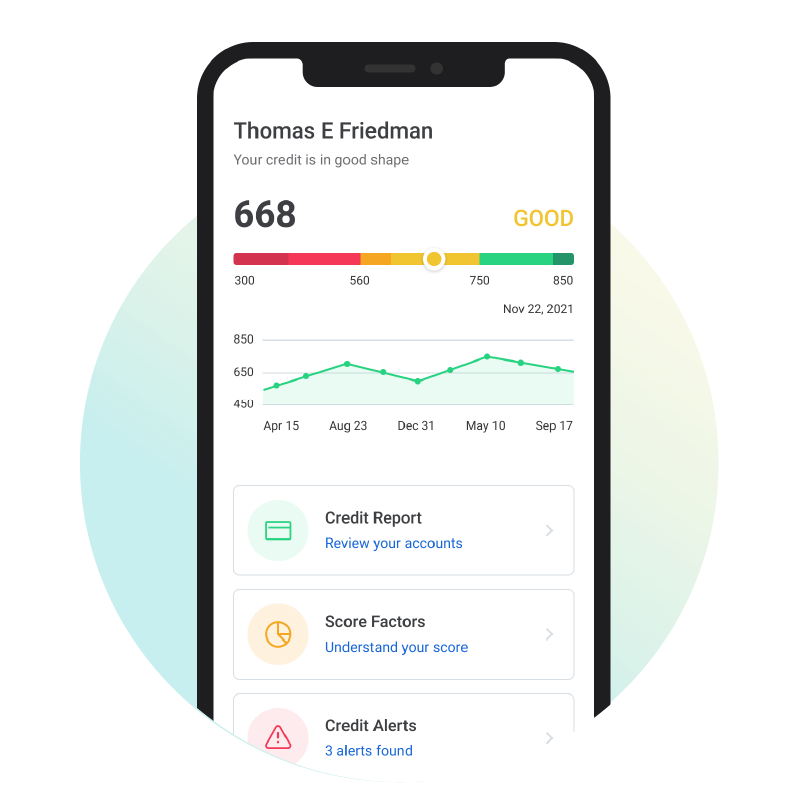As consumers, we have many tools and services available to manage our finances. With the advent of seamless links to our financial accounts to generative AI enabled services that can learn and answer questions about our spending habits, we have the luxury of testing the waters and finding the solutions that work for us.
And our expectations of any new app? Extremely high. Interestingly, some apps are starting to deliver at those expectations, but the bar still goes higher.
More on that later.
What this competition means for fintechs and financial services is they can no longer depend on consumer loyalty to maintain customer retention rates.
In fact, Gen Zers are the most likely to change primary financial institutions when compared to other generations. Deciding factors can include anything from better interest rates, branch preferences or product capabilities. It’s therefore crucial for financial institutions and fintechs to stay on top of consumer preferences—especially with Gen Zers as they’ll make up a quarter of the workforce by 2025 and will have $33 trillion in purchasing power by 2030.
The rallying cry for innovation as a response to less sticky customers is, of course no secret to the tech giants, nimble neobanks and financial institutions of the world who are fighting for their right to stay in their consumers’ wallets.
Here are some of the ways we’re seeing this play out:
-
JP Morgan Chase invests $12 billion yearly in machine learning, blockchain, and artificial intelligence to personalize their digital experience for customers.
-
Neobanks like Monzo and Starling challenge the traditional banking model with a digital-only customer-centric approach, leveraging technology and reduced overhead to provide low-fee products and services tailored to the needs of individual customers.
-
Paypal, an early disruptor and market leader in the digital payments space, continues to stay relevant all these years by doubling down on their network effect via new services such as peer-to-peer lending to meet evolving customer demands.
-
Apple stands at the forefront, exemplifying the seamless integration of big tech and financial services. The company cemented its foothold when it recently launched a high-yield savings account product that quickly reached $1 billion in deposits within the first four days.
-
BaaS platforms provide more financial transparency options by letting banks open their APIs for third parties to develop new services. Tech-savvy legacy banks can enter the BaaS sector to share their data and infrastructure with businesses, from fintech startups to established platforms.
But despite the strategic investments in new and interesting financial services, some of these strategies haven’t quite worked out the way these institutions hoped. What happened?
Innovation: culturally intrinsic or an extrinsic stranger?
Let’s take a look at Goldman Sachs for example and their venture into consumer banking with products like Marcus, the Apple Card, and their acquisition of GreenSky, a provider of point of sale home improvement loans.
Despite a strong start and having accumulated over $35 billion in deposits just 2 years after launch, Marcus still remains unprofitable—having incurred $3 billion in losses since December 2020. The Apple Card was initially considered a success with 6 million cardholders but has since accrued $1.2 billion in losses. And just a few weeks ago, it was reported that Goldman is likely to take a writedown for GreenSky after looking to divest the business.
It begs the question—can the demise of their consumer banking endeavor be attributed to gaps in their product strategy or to the lack of institutional knowledge in developing these product lines. Or both?
It was certainly a laudable attempt at innovation and at expanding into a new territory—especially for a 154 year old company with a market cap of $113.31 billion and 48,500 employees. But perhaps that’s the issue—is that once organizations exceed a certain size, it becomes exponentially more difficult to remain agile while maintaining operational excellence.
In contrast, take a look at Apple. A 47 year old company with a market cap of $3 trillion and 164,000 employees—a large company by any stretch of the imagination. Yet they’ve surprised and delighted year after year.
Two globally recognized, Fortune 100 companies whose foray into innovation veers in two completely different directions.
The fact is, innovation does not have to be constrained by age, the weight of a sizable market cap or the logistical behemoth of managing thousands of employees.
It's often about leaning into your teams’ unique capabilities on an individual and team level to deliver great value to the customer and exceed their expectations. Whoever your customer is, their expectations aren’t going down.
It’s admirable to want to add new features and capabilities and programs but if your internal culture isn’t set up to support it, perhaps that’s the sticking point that needs to be solved first before embarking on pioneering anything new.
That’s how fintechs who pioneered the industry and financial institutions who are faring well are adapting and succeeding—by ensuring the exceptional execution of innovative strategies and tactics and not letting size or an abundance of processes slow them down.

Stay competitive with embeddable financial tools consumers actually use.
How are customers responding?
What’s challenging about the slew of choices we have today is that we’re not only faced with a paradox of choice but we’re also left with a multitude of apps that we use to stitch together our financial lives.
That makes it more onerous for us to truly understand our full financial picture — which is why consumers today crave a comprehensive suite of tools that can truly empower them to achieve their financial aspirations—all in one place.
Yet, trust in traditional financial institutions has dwindled, with only a fraction of consumers believing that their banks genuinely have their best interests at heart. This makes it all the more challenging for consumers to bet on one single financial institution. In fact, research indicates that customers place more trust in fintech firms than in longstanding legacy institutions. Consequently, some individuals have chosen to reduce or withdraw their deposits, seeking alternative solutions to fulfill their financial needs.
These trends explain the fragmentation that is the financial services market today. One bank might offer a great mobile experience but another fintech might provide better personalized services and yet another might boast a superior peer to peer payment capability.
In this current economic landscape, people are increasingly focused on securing the best deals (exemplified by the substantial number of individuals opting for Apple's savings accounts over traditional banks), the best features and the quickest solutions to their most immediate problems. And why shouldn’t they? Especially with switching costs being next to nothing for consumers.
To thrive in this competitive environment, financial institutions and fintechs alike need to focus on truly understanding their customers' needs, building trust and staying at the forefront of tech advancements. This entails:
-
Providing targeted and personalized financial products that cater to individual needs, empowering customers with a wide range of options, including customized financial solutions.
-
Safeguarding customer data, maintaining transparency in practices, and ensuring easy accessibility to customers’ financial information.
-
Harnessing the potential of technological advancements including artificial intelligence, machine learning, and seamless digital experiences to enhance the convenience of services for customers.
Presenting the Array
Candidly, the industry is asking for a lot to stay ahead: Stay on top of the latest technological advancements, stay in front of evolving consumer preferences, make sure to offer delightful user experiences, ensure a strong culture to foster and encourage innovation... The list goes on—all of this with limited resources and with an increasing number of new entrants on the regular. Quite the formidable list of challenges.
That's where Array comes in.
We founded Array with a singular focus: to fuel our clients’ and their consumers' financial futures in a way that makes sense to them.
Our platform offers a suite of embeddable products that can be seamlessly integrated into a company's existing digital experience, allowing for the quick deployment of financial tools without exhausting internal resources through costly and time-consuming development processes. For their customers, that means the ability to access multiple facets of their financial ecosystem – all in one place.
These embeddable tools are designed to help our digital brand, fintech and financial institution clients increase engagement and support revenue growth while helping their customers become more empowered to take control of their financial future. And yes, the ability for our clients to stay innovative through our products is a designed byproduct of the Array platform.
These products include:
-
My Credit Manager encompasses a comprehensive set of personalized credit data features such as FCRA-compliant credit score tracking, debt analysis, and detailed credit reporting.
-
Identity Protect is a group of advanced identity monitoring and protection features for safeguarding the sensitive data of customers, employees, their families, and partners.
-
With our Offers product suite, you can leverage our data insights to determine customer eligibility for products, understand their unique needs better, and personalize your offering to cater to them.
-
Debt Manager gives companies access to up-to-date and real-time credit data, such as their customer's account balances, to help them identify, assess and manage lending risk.
-
Subscription Manager helps companies give their customers control over their subscriptions.
-
Privacy Protect helps customers prioritize their privacy by helping them take control of their online data.
-
BuildCredit Account is a credit builder product that our clients can offer their customers to help build and improve their credit scores.
And this is just the beginning.
Array is a passionate team dedicated to empowering individuals and institutions, equipping them with the tools and knowledge to navigate the ever-changing financial services landscape with unwavering confidence.
With our embeddable products, organizations can go above and beyond, providing their customers with a comprehensive suite of invaluable financial tools. It's about more than just surviving; it's about thriving and staying innovative in today's fiercely competitive market.
Together, let's shape the future of finance and drive meaningful financial outcomes for all.
Stay ahead of shifting consumer expectations with faster product launches.
Book a 15-min call.
Disclaimer: Array takes pride in ensuring the information we share is accurate and up-to-date; however, we understand that the information you read may differ from the product(s) and/or service(s) mentioned. We present the product(s) and/or service(s) you read about without warranty. We recommend you review the product and/or services’ terms and conditions before you make a decision. If you encounter inaccurate or outdated information, let us know by writing to: info@array.com.
Editorial Note: This content is the author’s opinion, expression, and/or recommendation(s).
Tags:
Thought Leadership
Post by Martin Toha
Martin Toha is the CEO and co-founder of Array. Launched with a mission to fuel financial progress, Array helps digital brands, financial institutions, and fintechs get compelling consumer products to market faster.
A true serial entrepreneur, Martin is driven by solving the most pressing challenges faced by companies and their customers through designing solutions that meet them where they are. Today, Array is helping millions of consumers better manage their financial lives through fintech products that seamlessly align with their needs.


